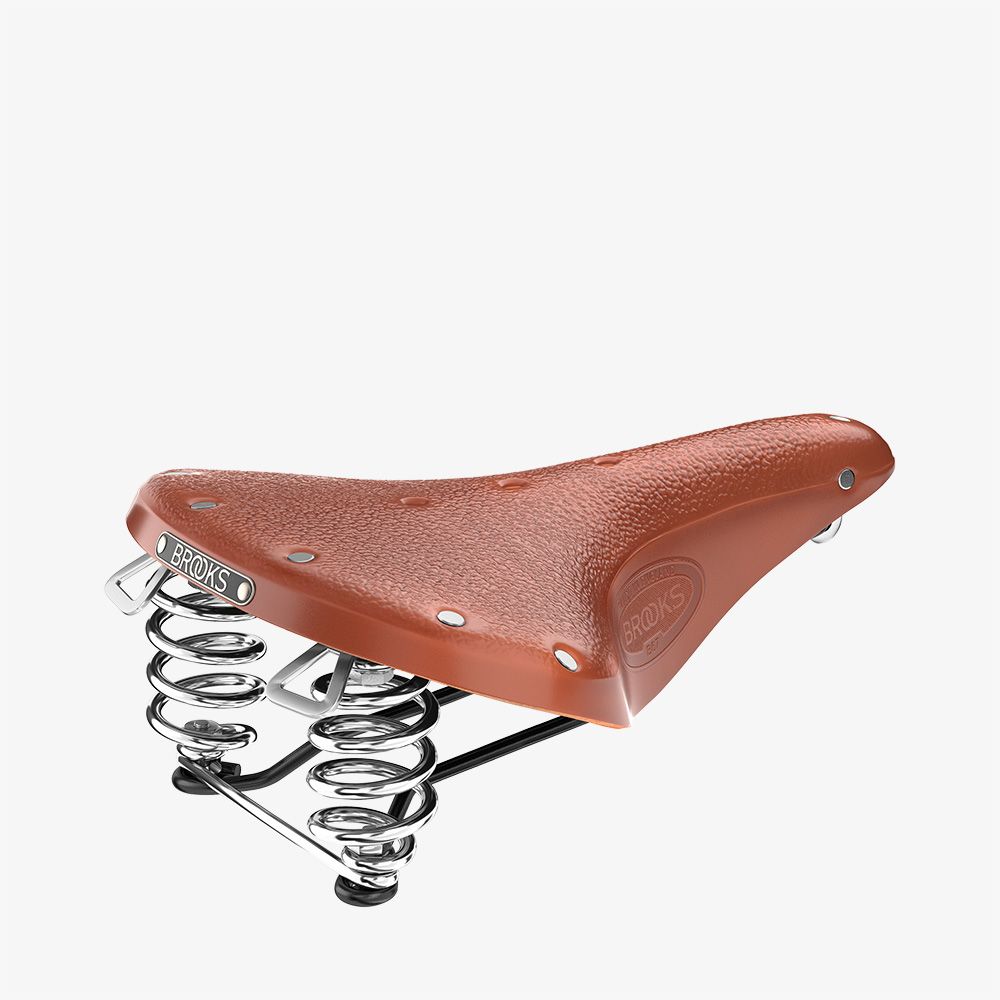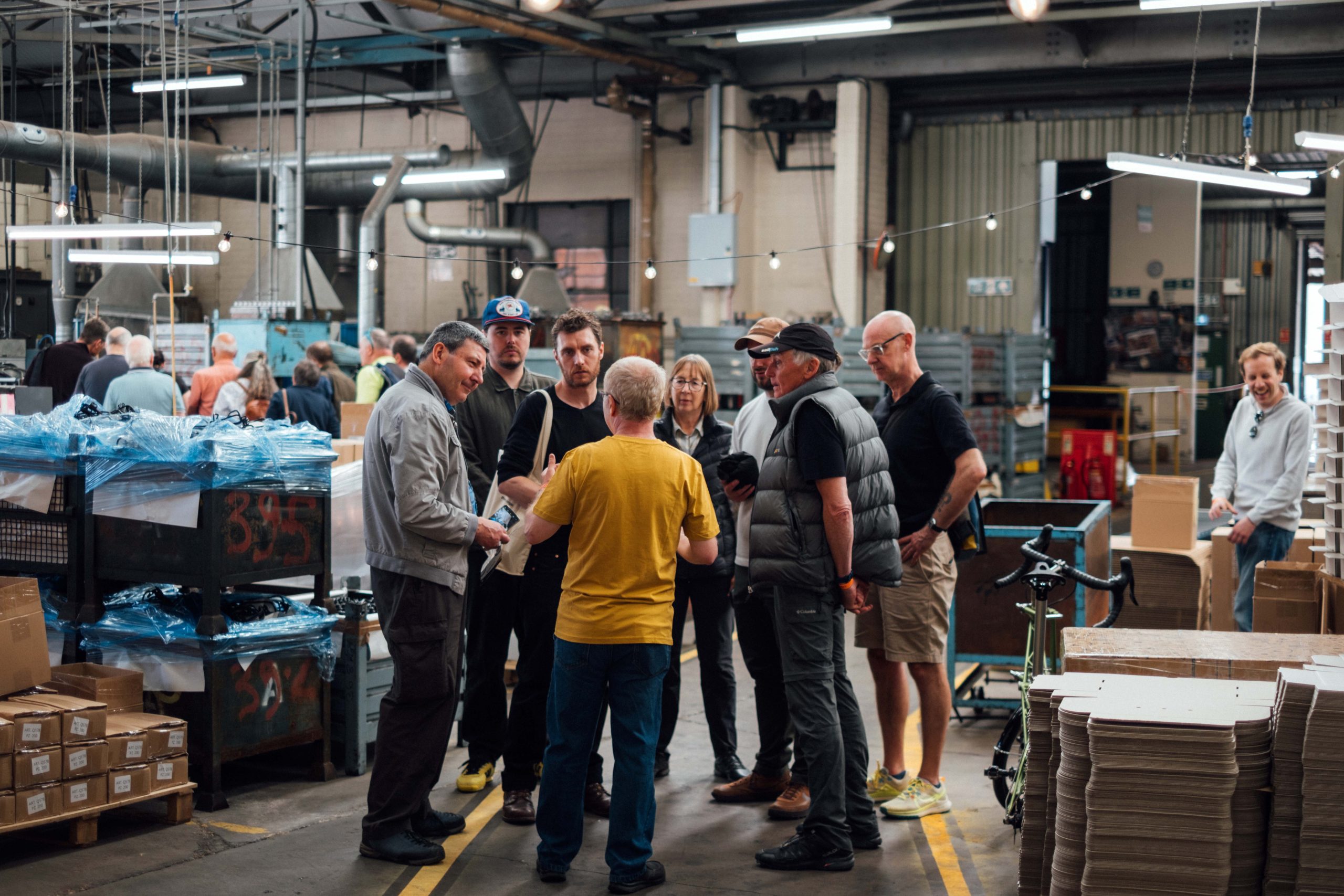
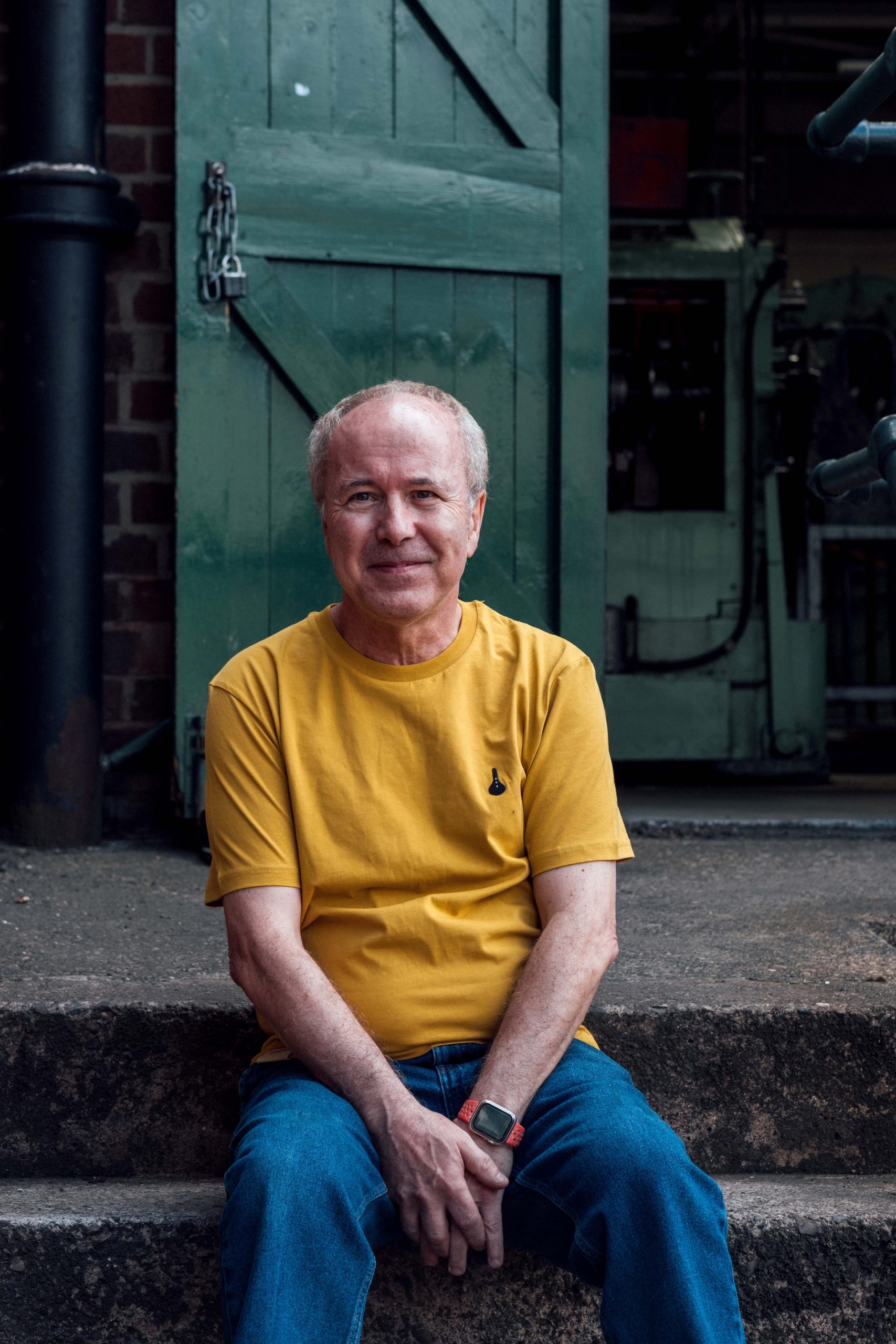
People
Steve Green, part of the family
Steve Green has been a fixture of the Brooks factory for forty years
By Tom Owen
Steve Green is a man with an enthusiasm and vigour that belies his age. He is not far from retirement, having worked at the Brooks factory for more than forty years – and yet, it’s easy to sense his excitement about the company.
As such a long-standing member of the factory family, he is often the one tasked with giving tours to visitors. Indeed, it often feels as though he is showing you around his own home – so comfortable and relaxed is he, and so evidently proud of the products his coworkers are making.
As the tour turns a circuit of the factory floor, following the same route from machine to machine that a Brooks leather saddle takes as it is transformed from constituent parts into a fully-fledged masterpiece, Green enthusiastically explains each function, pausing to share a few words or a joke with every colleague.

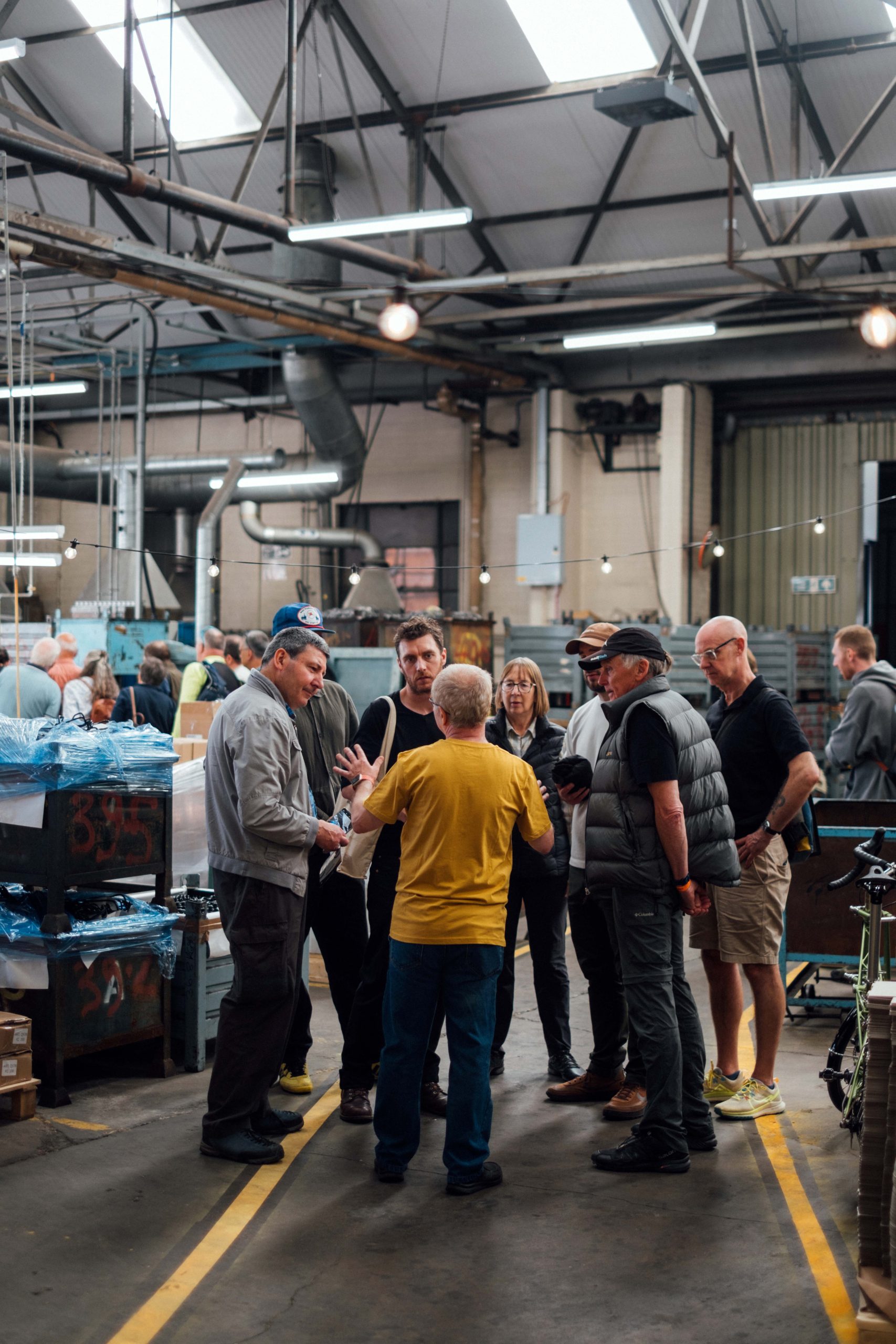
40 years is certainly a good innings, so one assumes much must have changed in the time that he has worked for Brooks. Green, however, says otherwise.
“The process of making the saddles is identical really to what it was thirty, forty, even fifty years ago. There’s a few modern machines that have come in recently to try and help out and speed things up, but generally speaking, the process itself is unchanged.”
Under the umbrella of ‘Sturmey Archer / Raleigh’, former owners of Brooks, it was once the case that you could build an entire bicycle with components made by one company. Green explains those days are long past, but that the leather saddle endures.
“Gradually, with competition from Asia, particularly on the metal parts, we lost trade and we lost business, and it shrunk and shrunk and shrunk. The leather saddle is the one thing that competitors are struggling to get in there and beat us at because of this ‘dark witchcraft’ involved in leather working – where it’s not always precise, and it’s down to experience and decision-making rather than a rule book and a guide book. I think that’s what’s kept competitors at bay.”
“When you travel around the world and you see people riding your Brooks saddle, you think, ‘we made that’, and it gives you that sense of pride.”
The Brooks factory, you see, has remained the same, while the ownership of the brand has changed hands on more than one occasion. Four decades is a lot to commit to one company – particularly one that has seen its share of tumult – but it’s clear from walking the factory floor today with Steve that this is a place and group of people he feels a deep affection and respect for.
“Brooks traditionally has always been like a community. We all get on with each other, and we have disagreements of course, but it’s almost like a family to us. When I first began, there were brothers and sisters working here, aunts and uncles; it was like a big family get-together. So it was one of those places that has always been a fairly friendly workforce, and that’s part of the attraction that’s kept people here. A lot of people have been here for many, many years; people just get on with each other quite well.”
It’s striking during a walk around the factory the way each member of the team has an ability to carry off the incredibly intricate processes required to fashion a Brooks saddle – using some quite scary machines at times – and then immediately switch modes to laughing and joking with their coworkers. Or explaining enthusiastically what part in the process they were playing that day.
“We’re all very proud of what we make. When you travel around the world and you see people riding your Brooks saddle, you think, ‘we made that’, and it gives you that sense of pride. I think that reflects when visitors come round, we’re always keen to show what we can do.”
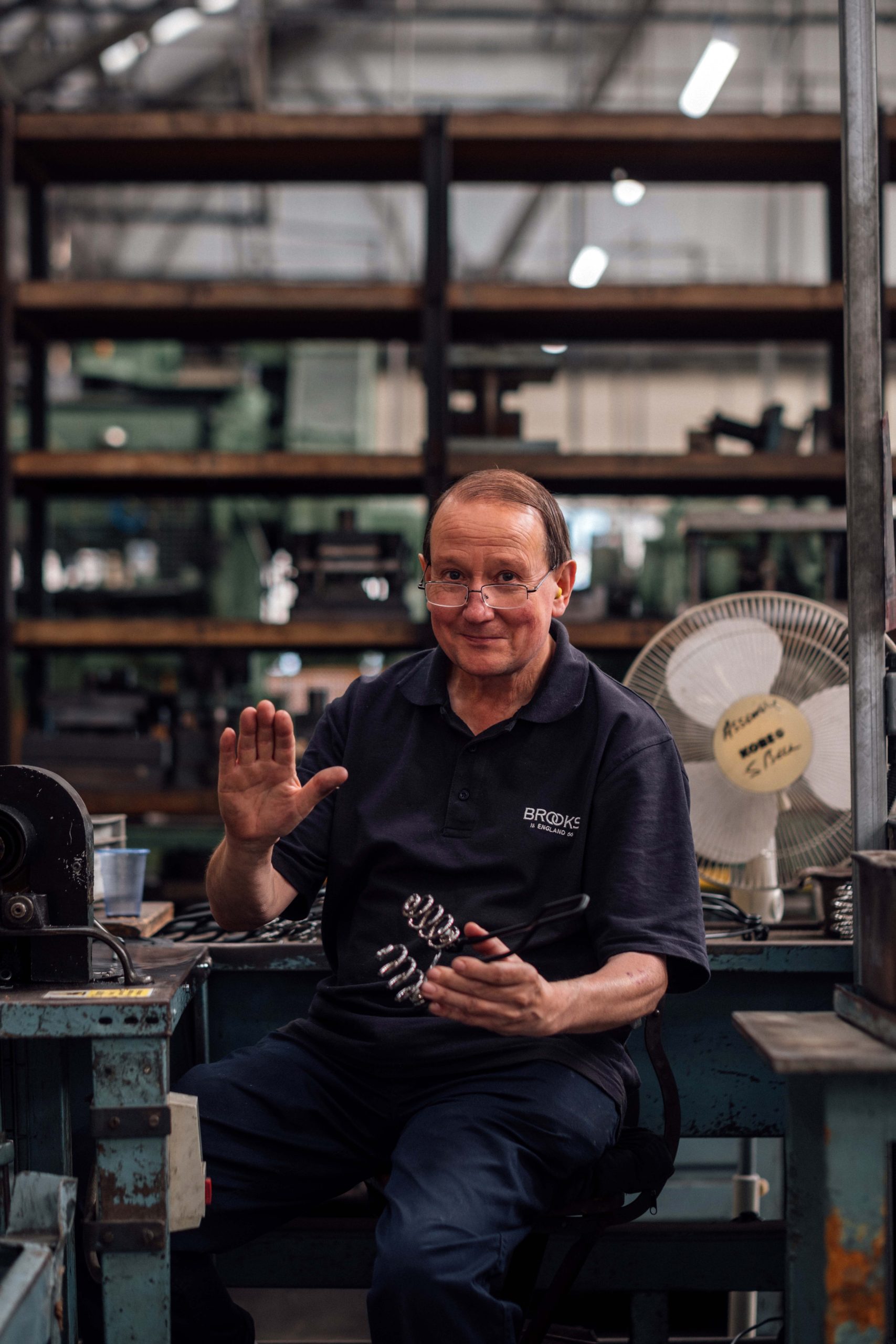
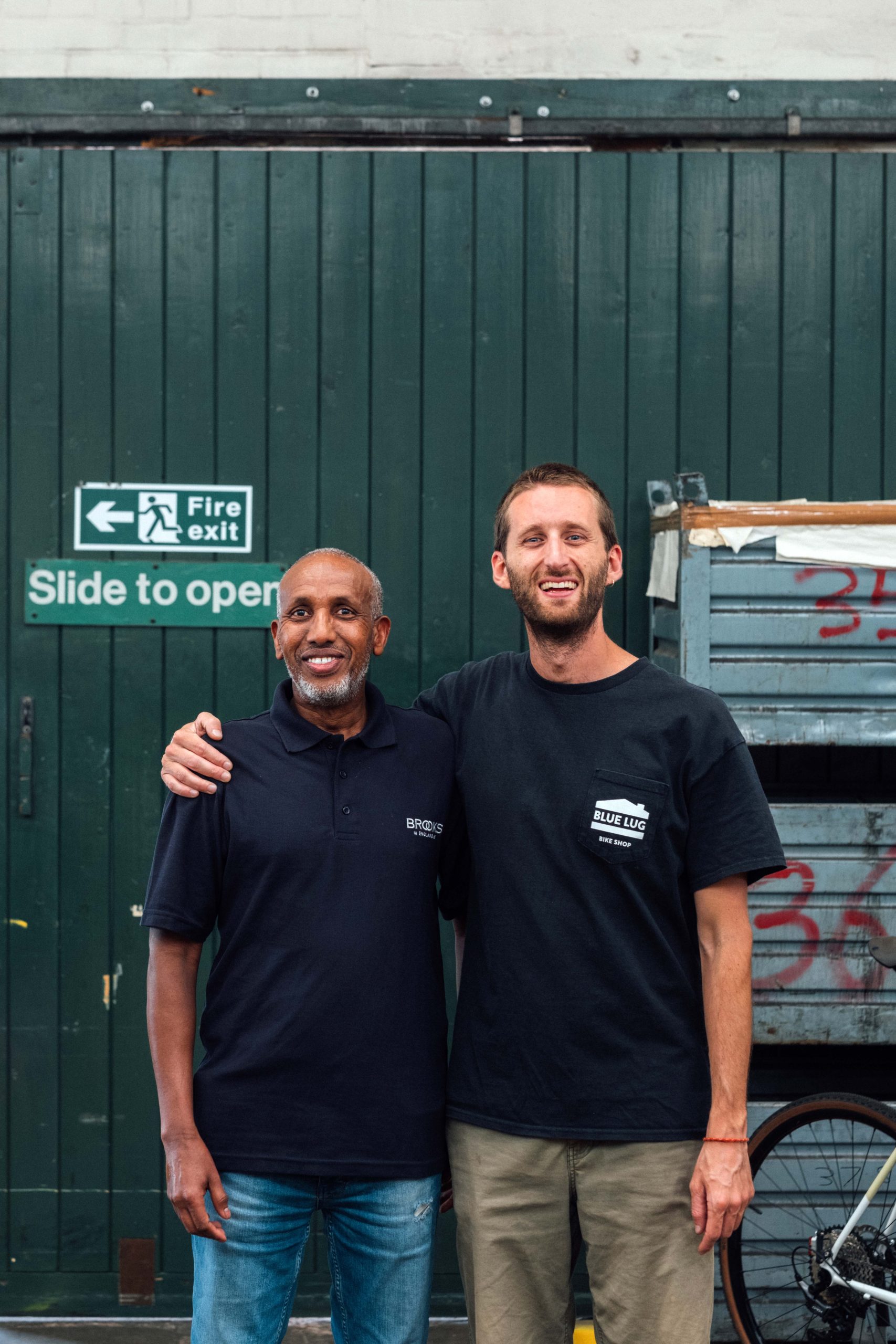
Although most people stay working at the Brooks factory for many years, people do leave from time to time. How the factory hires more staff is a bit of a puzzle. After all, there can’t be many master leather workers knocking about these days.
“I would say it takes someone at least six months to master it. We save any scrapped tops [usually put aside if a mistake is made or a blemish in the leather found] for apprentices to work on. From experience, we tend to know within a month whether the potential is there, if they’ll succeed or not.
“You can tell whether they’ve got that steady hand, that right kind of mental attitude. But there are some really skilful operations in that department where you can’t just get people in off the street and expect them to do it straight away.”
There’s a personality that excels at this type of work, Green says.
“You need to be fairly focused, meticulous. You’ve got to be able to keep your concentration going consistently high over a couple of hours.
“They swap machines every two or three hours, because you couldn’t do one process all day or it would drive you crazy. You would start to lose concentration. But some of the guys out there can probably do it for three hours and then they swap around with someone else.”
Three hours of concentration on anything sounds like a herculean feat in the TikTok era.
“It’s something that you’ve got to work at and practice, and you’ve got to have that right kind of patience. It’s not all about strength and physicality, it’s about concentration, hand-eye coordination and patience, and sometimes the ability to just ‘go for it’.
“It’s one of the things where you can’t be hesitant. Once you’ve put the knife down on the leather you’ve got to try and go through it all in one smooth, easy motion and finish it. If you start to think about it too much and stutter and wait, and stop, you’re going to make mistakes. They make it look so easy, but it’s actually so difficult.”
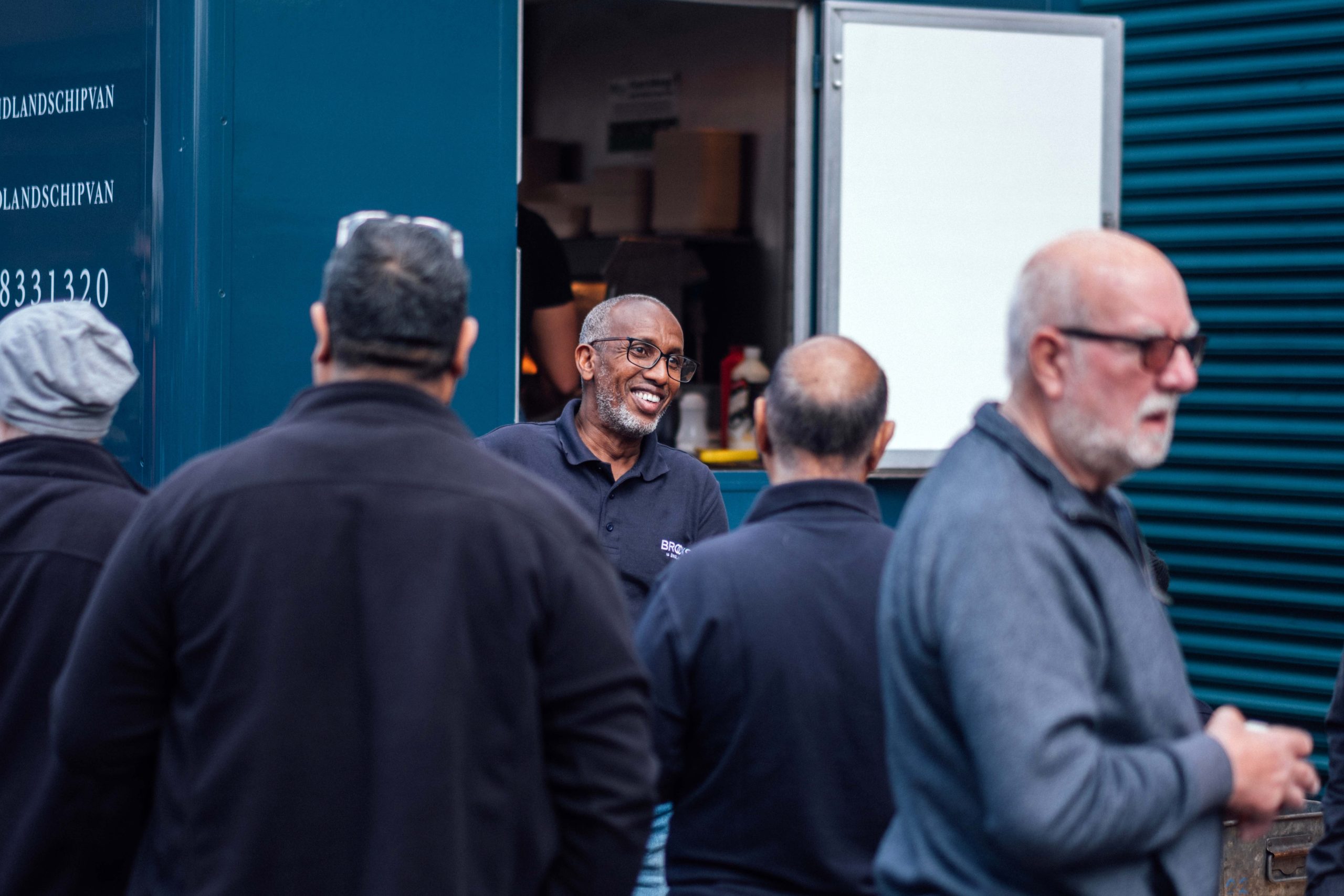
In a time when manufacturing jobs are scarce and getting scarcer in the United Kingdom, Green says Brooks became aware of a change in its factory staff around a decade ago.
“Traditionally the old masters who are starting to get towards retirement age would take on an apprentice and try and teach them everything they know, and this still goes on, this still happens here now. We did become conscious ten years ago that we were an ageing workforce and we needed some new blood. We brought a whole batch of new people in, gradually one by one, and we have thankfully now got a bunch of younger people who are going to carry the mantle forward for us.
“It has become more difficult because – for young British kids particularly – factory work, engineering work, has become kind of ‘uncool’. It’s been difficult to break that barrier down; they’re wanting to go into IT, banking, insurance, and you think, as a country we still need to make things, to manufacture things. I think that message is getting through now and we have had help from the local enterprise schemes and government initiatives and local universities and colleges. We have had school and university visits where kids come in and look at things. I think that’s really important for our future – to try and get young people who still want to use their hands and make things.”
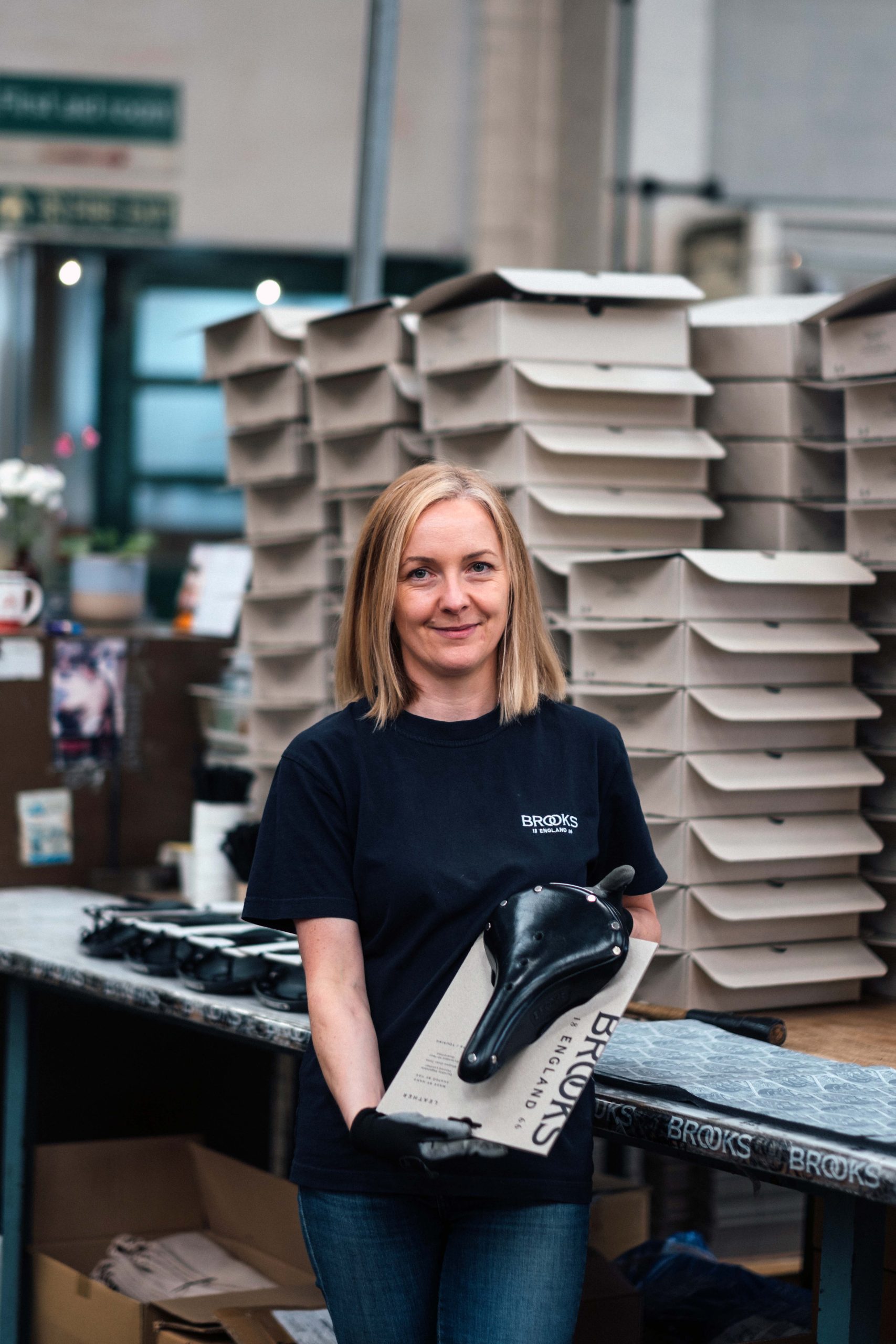
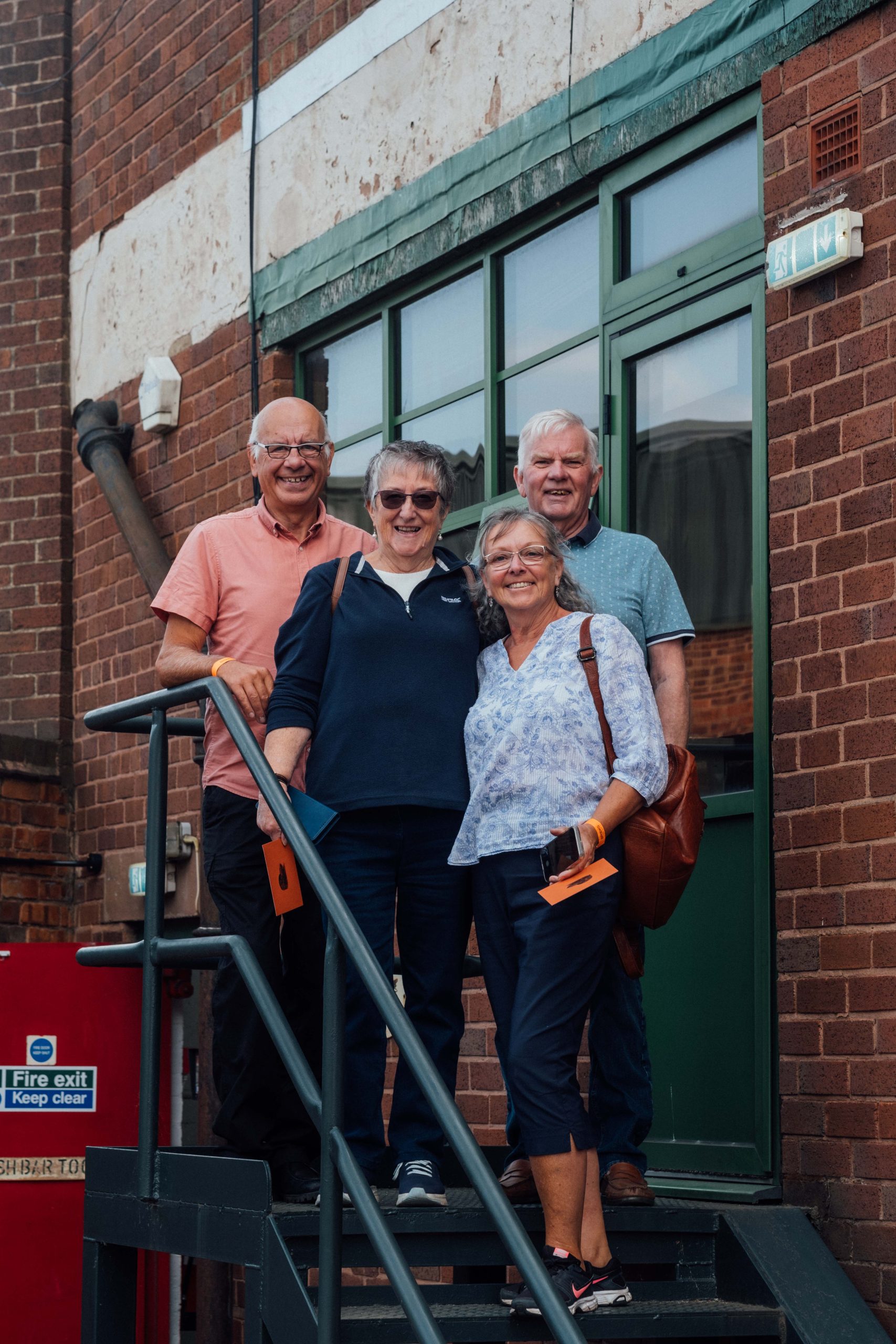
Green himself joined the Brooks family young. He came straight to the factory from sixth form [the final two years of school before students move onto university or go out into the world of work], just shy of his eighteenth birthday.
“When I first started, I went into the costing department calculating the individual cost of every saddle. Then, luckily for me, they decided I was good material to go and learn to be a management accountant. I went to the college one day a week, and the great thing about the course that they put me on was it wasn’t all about sitting exams and getting grades. Practical office experience was a big part of the course, so I had to spend at least three months looking at different aspects of the business.”
He has worked across almost every facet of the business since then.
“I spent three months looking at production control, scheduling, production planning; I spent three months in HR, personnel; I spent three months in quality control; I spent three months in what was then ‘booking’. That process really kept me interested, and at the same time gave me a broad base of knowledge which has kept me in the business for forty years, even through redundancies.
“I class myself as a sort of jack of all trades, master of none. But it’s seen me through some hard times. We’ve had some tough times at Brooks; we’ve had redundancies and people have had to leave and stuff, but I’ve been kept on because of this broad base of knowledge that I’ve amassed.”
“That’s part of continuing the brand through many more years and it’s what I want when I’m kicking the daisies – I want Brooks still to be going!”
All companies have what’s known as an organisational memory, the collectively held knowledge about how everything works. It’s what keeps the business running year-to-year, decade-to-decade. In the Brooks factory’s case, it would be fair to suggest that Steve Green is the organisational memory.
In his 40 years, he has witnessed Brooks become a greener company – a change he championed, alongside many others.
“I think the leather industry generally recognised that processes like chrome tanning were a problem, and Brooks was raising concerns about it as well. I think that the whole leather industry moved together to try and change. Brooks was part of a group that were expressing concerns about it, and it was a concerted effort by the whole industry generally to try to be more ecologically friendly.”
And of course there’s the fact that a leather Brooks saddle can be repaired and reused – with the option to transfer your old saddle’s leather top to a new frame should the original wear out. Something that can’t be said for many of its competitors’ products.
“Part of the philosophy of riding a leather saddle is that the leather itself becomes your personal leather, and when that saddle needs repairing, a lot of people come to us, ‘I’ve spent almost thirty years shaping this to my backside. I don’t want to throw it away!’
“We can put a new frame on it if it’s broken, or whatever. So, part of that repair process – it’s not good for new business, I guess, but at the end of the day, it’s part of the service that Brooks likes to provide and it speaks to the longevity of the saddle. A lot of the Brooks fanatics tend to have seven or eight different bicycles and they’ve got seven or eight different leather Brooks saddles, so it’s not one saddle for one customer forever.”
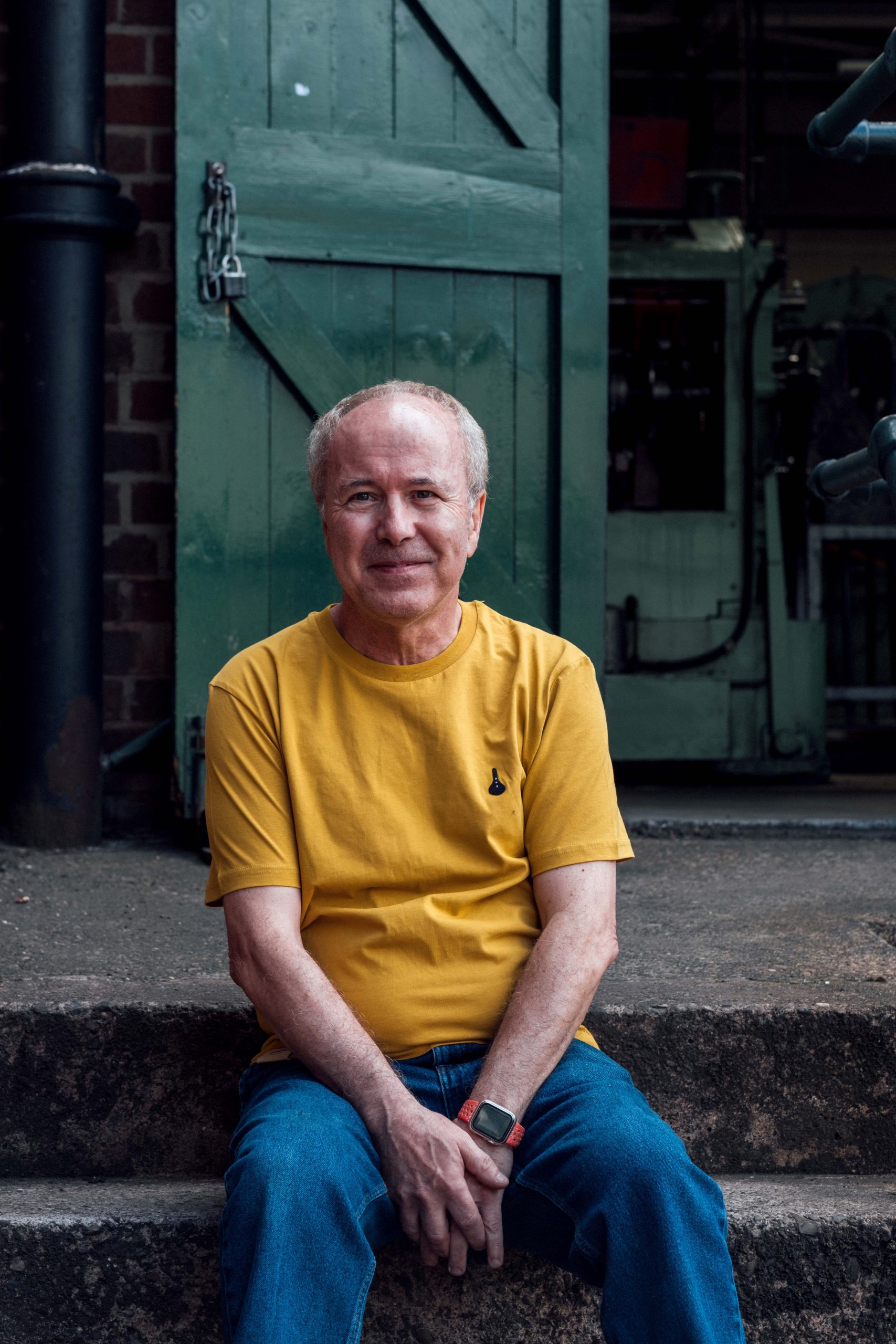
Through all the years, and with the end of his service to the company in sight, Green says he feels positive about the future.
“We went through a spell probably fifteen or twenty years ago where we became this throwaway society where you’d buy something and you’d use it for a year then you’d throw it away and you’d buy a new one. We’ve worked, me and others, have worked really hard to try and educate younger people to think that if you just take a bit of time and care over a leather saddle, it’ll keep going and going and going for years and years and years. And that message is getting through now.
“That’s part of continuing the brand through many more years and it’s what I want when I’m kicking the daisies – I want Brooks still to be going!”
A version of this article was originally published on the Brooks Journal in 2018. As Steve’s retirement draws closer, we wanted to share it once again – as a small gesture of our appreciation for his incredible service to the company.
Favourites from the factory floor
More People Stories
Erwin Sikkens… the dadventurer
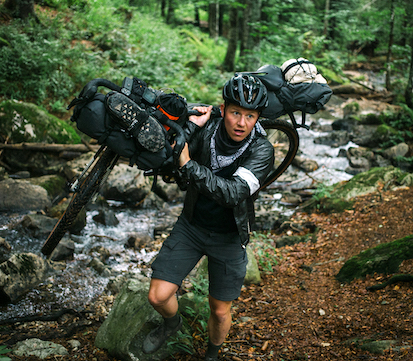
New Brooks ambassador Erwin Sikkens is a bikepacking gravel route deviser, and won’t let being a dad diminish his sense of adventure. Quite the opposite in fact!
READ MOREMr Imperfect… meet Allan Shaw

Discover Allan Shaw’s philosophy of anti-elitism, pro-imperfection, and eternal optimism.
READ MOREIntroducing… Anton Krupicka
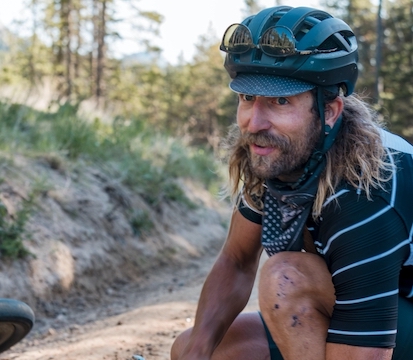
Anton Krupicka is an adventure cyclist, runner, skier. A longtime Brooks rider, we’re delighted he’s now also a partner athlete.
READ MORE




